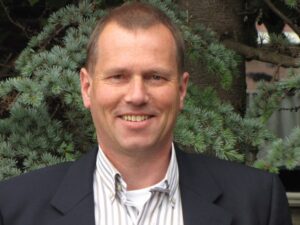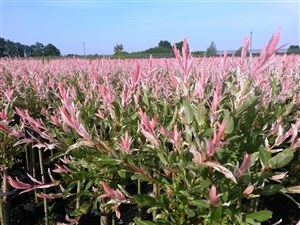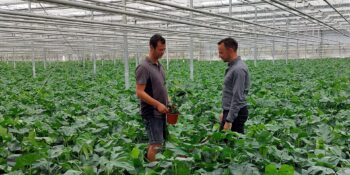In the quest to find ways to solve the problem of global warming, many large companies are turning to carbon credits. Briefly, this entails companies paying to offset the effect of their CO2 emissions by having trees planted elsewhere on the planet. But there could be an easier way, Peter Bontekoe of Salixkwekerij Bontekoe believes. He advocates for turning to Dutch tree nurseries for a solution to the CO2 problem.

Peter Bontekoe
In around 1990 Bontekoe saw an increase in interest in tree nursery products at garden centres, DIY stores and supermarkets. To meet the growing demand, he decided to scale up production of Salix (willow). That turned out to be a good move. “Since then, we have expanded our Salix production, and it’s going well. We are the only company in Europe specialising in growing Salix in standard and bush formats. We now have fifteen different species on ten hectares, spread over three sites. We supply Salix plants to anyone who wants them and have customers ranging from small to large, most of whom are in the UK.”
Intensive cultivation
Bontekoe describes Salix cultivation as intensive. “The biggest challenge is probably its susceptibility to disease during the grafting process. There are very few good antifungal agents available, and because it is an outdoor crop, we are limited in terms of biology. But we do try to use it, and luckily, we need very little crop protection – only during the growing period, three to four months in summer.”
Another challenge is labour. “Grafting stems is labour-intensive: you have to cut to the right size, grafting the ‘eyes’ and secure the stems to a wire so they don’t blow over. So there’s a lot of craftsmanship involved, and because it’s a relatively small-scale crop, it can be a challenge to find people.”
Sustainable before that was a thing
Challenges or not, the nursery has been profitable and also sustainable for years. “We were already sustainable back in the 1980s, before the word was even invented,” Bontekoe says proudly. “Now we are actually CO2 negative: we no longer use gas, and we generate more electricity with our solar panels than we use. We also use slow-release fertilisers and don’t need weed killers due to the coir matting that covers the crops. This also benefits the quality of the plants.”
‘The Netherlands should be much greener’
Bontekoe is therefore committed to growing as green as possible, and the products he and other tree nurseries supply can play an important role in making the Netherlands and the world greener, he believes. “Major polluters currently buy carbon credits for planting trees in Africa, but the world those carbon credits inhabit is quite murky – it’s not always clear whether the promised trees are actually planted. I would therefore like to call on Dutch companies to buy carbon credits in the Netherlands.”
Bontekoe argues for a system at the European level. “Let’s just start planting trees in the Netherlands, with a more local system. By doing so, you are also improving the air quality, as trees and plants also remove particulate matter from the air. The Netherlands should really be a lot greener than it is, which would also help to bring down urban temperatures. As I said years ago as chairman of the Dutch Nursery Stock and Perennials Association (LTO-vakgroep Bomen en vaste planten), we tree growers can solve the greenhouse effect.”
Working together on going greener
Hard figures are needed to back up that claim, he realises. “I hope we can start making progress in that area. We don’t yet have the necessary carbon footprint tools, but we do need to be able to demonstrate that we can reduce CO2 emissions with our products. I know that MPS is working hard to make that more transparent, which I think is a good thing: it can also be a selling point for customers. It would also be nice if the sector were to cooperate even more with nature organisations keen to boost their green credentials, such as Staatsbosbeheer [the Dutch forestry service].”



